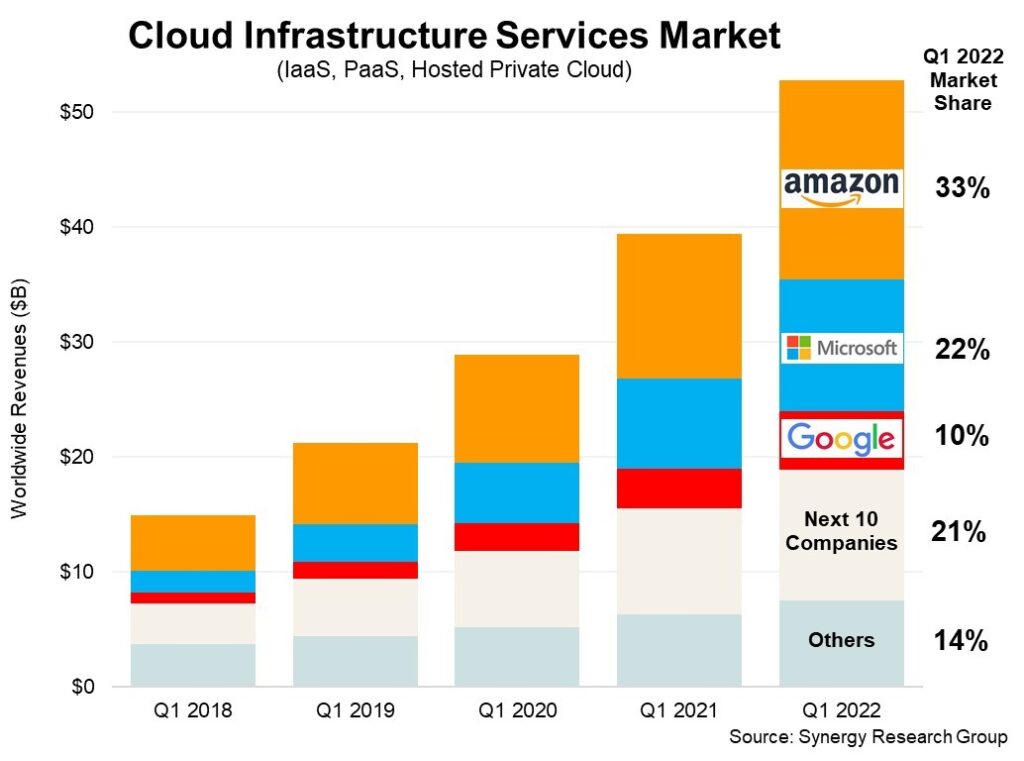
Source: Cost of Data Center Outages WP FINAL 2 (ponemon.org)
Discover the secret to banking infrastructure success in this blog post.
Learn about 5 common pain points & how to fix them. Prevent costly downtime & improve systems performance with regular infrastructure reviews.
Best practices for large enterprises in the African banking industry. Stay ahead of the curve, protect data, save money, & stay competitive.
5 Common Infrastructure Pain Points and How to Fix Them
Banks use technology a lot. It’s important to keep their systems working well. Sometimes, problems happen. Here are 5 common problems and ways to fix them:
- Scalability: When a business grows, their systems need to grow too. A cloud-based system can help with this.
- Downtime: When systems are down, it costs the business money and time. A disaster recovery plan to fix problems quickly can help.
- Security: Hackers try to break into systems. A security information and event management (SIEM) system can help detect and stop them.
- Complexity: As systems get more advanced, it can be hard to manage them. A simpler system, preferably on the cloud, can make this easier.
- Cost: It’s expensive to maintain and upgrade systems. A pay-as-you-go system can save money.
By fixing these problems, a business can make their systems work better and make more money.

Source : The Business Value of Hybrid Cloud with VMware
References:
- “The Cost of Downtime” by the Ponemon Institute, Cost of Data Center Outages WP FINAL 2 (ponemon.org)
- “The Business Value of the Connected Cloud” by IDC and VMWare,
Prevent Problems: The Importance of Regular Infrastructure Reviews

Source: Cost of Data Center Outages WP FINAL 2 (ponemon.org)
Imagine saving money, protecting systems and data, and staying competitive all at once. Regular infrastructure reviews make this a reality. These reviews test the security, scalability, and health of your systems. They also identify and address potential issues before they become major problems.
Don’t let costly downtime and repairs hold you back. A study by the Ponemon Institute found that the average cost of unplanned downtime is $5,600 per minute. Regular infrastructure reviews help identify and address issues early on.
Cybersecurity threats are evolving, leaving your business vulnerable to attacks. Reviews identify vulnerabilities and install best practices to protect your systems and data.
Stay ahead of the curve with regular infrastructure reviews. As technology advances, it’s important to meet the demands of your customers. These reviews identify improvements and help you stay competitive in the market.
Unlock the hidden potential of your banking infrastructure with regular reviews. Protect your systems and data, save money, and stay competitive in the market all at once.
Infrastructure Review Best Practices for Large Enterprises
Conducting regular infrastructure reviews is crucial for large enterprises in the banking industry. As more banks adopt technology, there is a need for a robust and reliable infrastructure.
In this section, let’s look at some best practices for conducting infrastructure reviews. Especially for large enterprises in the African banking industry.
- Regular Audits: Banks should conduct annual regular infrastructure reviews. These reviews ensure systems’ security, performance, and availability.
- Risk Assessment: Conduct a risk assessment as part of the review process. Identify potential vulnerabilities and the likelihood of exploitation. This will focus on and address the most critical issues.
- Compliance: Banks adhere to various regulations such as (CBN Central Bank of Nigeria). For example, the CBN’s guidelines on Cybersecurity in the Nigerian banking industry. Hence, infrastructure reviews should have a compliance check to meet all regulatory requirements.
- Automation: Consider implementing automation in the infrastructure review process. Automation reduces human error, improves monitoring, and allows response to issues faster.
- Stakeholder involvement: Involve stakeholders from different departments of the bank. This will ensure consideration for all needs and tailor the solutions.
- Test Disaster recovery plans: Test disaster recovery plans. Test them at least and update them as necessary. This will ensure that the bank can recover from any disruptions.
References:
- The Central Bank of Nigeria (CBN) guidelines on Cybersecurity in the Nigerian banking industry”
- The Importance of Regular IT Audits for Banks” by the Association of Chartered Accountants.
How to Conduct a Successful Infrastructure Audit

Source: Image by Tumisu from Pixabay
A successful infrastructure audit is crucial ensures safety and security of customers’ data and transactions. Here’s a step-by-step procedure for conducting an infrastructure audit:
- Plan audit process, including objectives, scope, and team members.
- Assess risks to identify vulnerabilities and prioritize issues.
- Collect data on current infrastructure to identify weaknesses.
- Ensure compliance with regulations like CBN’s Cybersecurity guidelines.
- Test systems, including disaster recovery and network connectivity.
- Report findings and recommendations for improvement.
- Implement changes to improve infrastructure.
- Regularly monitor and review infrastructure to ensure efficiency and security.
Regular audits ensure safety and security of customer data and compliance with regulations in African banking industry.
Infrastructure as Code: A Review of the Pros and Cons

Source: Image by Dirk Wouters from Pixabay
Infrastructure as code (IAC) provides and manages IT through the use of code. This approach allows for automation, consistency, and repeatability in the management of infrastructure. While IAC has many benefits, it also has its drawbacks and may not be the best fit for every organization.
In this section, let’s look at the pros and cons of IAC. Also, examples of organizations from the African continent that have implemented this approach.
Pros:
- Automation: IAC allows for automation in management and deployment. This saves time and reduces errors.
- Consistency: By using code to manage infrastructure, organizations ensure consistency, which improves reliability.
- Version control: IAC tracks changes to their infrastructure. As a result, they roll back to previous versions if necessary.
- Scalability: Organizations scale their infrastructure with IAC. This is essential for organizations that are growing or experiencing increased demand.
Cons:
- Complexity: IAC is complex. Hence it requires a high level of technical expertise to deploy and maintain.
- Learning curve: Organizations need to invest time and resources in training employees. Both on how to use IAC tools and best practices.
- Limited flexibility: IAC may not serve organizations needing flexibility in their infrastructure.
Examples of African organizations that have implemented IAC include:
- Standard Bank of South Africa: Standard Bank is one of the largest banks in Africa. They have implemented IAC to manage their infrastructure. This enabled them to automate their infrastructure availability and increase their reliability.
- Safaricom: Safaricom is a leading mobile network operator in Kenya. They have implemented IAC to manage their infrastructure. This move has enabled them to scale their infrastructure.
- MTN: MTN is one of the largest telecommunications companies in Africa. They implemented IAC to manage their infrastructure. They automated their infrastructure and increase the reliability of their systems.
If organizations have technical expertise and willing to invest in training. IAC can bring significant benefits such as automation, consistency, and scalability.
References:
- “Infrastructure as Code: Managing Servers in the Cloud” by O’Reilly Media,
- “Infrastructure as Code: The Future of IT Operations” by Gartner Research,
Infrastructure in the Cloud: A Review of the Leading Platforms

The use of cloud computing is growing in Africa, as it offers scalable and flexible infrastructure without the need for expensive hardware.
The leading cloud platforms in Africa are:
- Amazon Web Services (AWS), known for its scalability and security, used by Standard Bank, Jumia, and Andela.
- Microsoft Azure, known for security and compliance, used by MTN, UBA, and Ecobank.
- Google Cloud Platform (GCP), known for scalability and performance, used by Safaricom, Cell C, and Union Bank.
- Alibaba Cloud, a Chinese provider known for scalability and security.
When choosing a cloud platform, consider your organization’s specific needs, the region’s support and expertise, and the pricing model.
Standard Bank of South Africa is an example of a successful cloud implementation, improving scalability and efficiency.
Consider your organization’s needs when choosing a cloud platform from the leading providers: AWS, Azure, GCP, and Alibaba Cloud.
References:
- “The State of Cloud in Africa” by Data Center Dynamics,
- “The Future of Cloud Computing in Africa” by The Next Web,
- “Standard Bank: Scaling infrastructure with AWS” by Amazon Web Services,
The Role of Automation in Streamlining Infrastructure Reviews
Banking in Africa gets a boost from automation. By using tech like Robotic Process Automation (RPA) and Artificial Intelligence (AI), banks can streamline their processes, save money, and enhance customer satisfaction.
One success story is First National Bank (FNB) in South Africa. They automated account opening and loan review with RPA, cutting processing time and increasing accuracy.
They’ve also used AI to better manage risk. The results? Lower costs, better efficiency, and happy customers. In 2020, FNB reported a 25% decrease in operational costs, 20% efficiency increase, and 10% rise in customer satisfaction.
Banking’s Future in Africa: Monitor & Automate for Success
African banks are ramping up tech investments to streamline operations, reduce costs and enhance customer experience. Key players are adopting Robotic Process Automation (RPA) and Artificial Intelligence (AI) to automate repetitive tasks, analyze customer data and mitigate risks.
Real-time data monitoring allows banks to make informed decisions and quickly identify opportunities or challenges. The results speak for themselves: banks adopting these technologies see reduced costs, increased efficiency and improved customer satisfaction
Disaster Recovery Planning: A Key Element of Infrastructure Review

Source: Image by Steve Buissinne from Pixabay
Disaster recovery planning (DRP) is crucial for banks in disaster-prone Africa. For example, a study by the International Journal of Information Management found that the average cost of a data center outage for a bank can be as high as $5 million.
Additionally, a survey conducted by the Federal Reserve found that 60% of small businesses that do not have a disaster recovery plan go out of business within six months of a disaster.
Banks should have a comprehensive DRP that addresses potential threats and outlines procedures for restoring operations. Measures such as regular backups, testing, and backup sites/mobile units help mitigate risks.
Standard Bank Group and Kenya Commercial Bank have implemented DRP with regular testing, staff training, and offsite data storage.
The Standard Bank Group, which has implemented a disaster recovery plan that includes regular testing and training of staff, as well as a mobile recovery unit that can be deployed in the event of a disaster.
Additionally, Kenya Commercial Bank (KCB)) has a disaster recovery plan that includes offsite storage of data and regular backups to ensure continuity of operations in the event of a disaster.
Infrastructure review for compliance with various regulations
African banks struggle with compliance to various regulations, such as cybersecurity, data privacy, and anti-money laundering.
Only 14% of African banks have a comprehensive cybersecurity strategy, putting them at higher risk of cyber-attacks and financial losses.
Data privacy is also a concern, but the African Union’s Data Protection Directive is still in draft form and has a long way to go for implementation.
AML compliance is also a challenge, as less than 10% of African banks have fully implemented AML programs, putting them at higher risk of money laundering.
African banks need to invest in infrastructure to support compliance and protect against financial losses and reputational damage. This includes investing in cybersecurity technologies and practices, data privacy technologies and practices, and robust AML compliance programs.
Sources:
- PwC (2018) “Cybersecurity in Africa: A wake-up call” https://www.pwc.com/za/en/services/advisory/cybersecurity-in-africa-a-wake-up-call.html
- African Development Bank (2019) “Anti-Money Laundering and Combating the Financing of Terrorism in Africa” https://www.afdb.org/en/topics-and-sectors/financial-sector-development/anti-money-laundering-and-combating-the-financing-of-terrorism-in-africa/
- “Small Businesses and Cybersecurity: Understanding the Risks” by the National Cyber Security Alliance, https://staysafeonline.org/small-business-cybersecurity-risks/


0 Comments